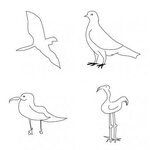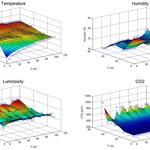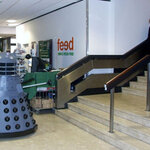Technology

The downside to computer programs is they lack the ability to interpret. A tiny human can look at a picture of a chicken and a cartoon of a chicken and know that's a chicken while a computer program cannot.
Researchers from Queen Mary University of London believe they have overcome one obstacle and have built the first computer program that can recognize hand-drawn sketches better than humans. They call it Sketch-a-Net and in their tests it is capable of correctly identifying the subject of sketches 74.9 percent of the time compared to humans that only managed a success rate of 73.1…

Centralized ventilation systems that exchange heat between the air inside and outside a building often come with a lot of pipes and shafts while compact, decentralized ventilation systems distributed throughout a building can provide a real added-value both in terms of design, comfort and energy efficiency.
The Green Ventilation system promise to balance inbound and outbound air flow in such a way that it reduces heating and cooling requirements—a principle called balanced heat recovery. The advantage of this system is that it can be added to building envelope components such as windows,…

CRISPR/Cas systems for genome editing have revolutionized biological research over the past three years, and their ability to make targeted changes in DNA sequences in living cells with relative ease and affordability is now being applied to clinical medicine and will have a significant impact on advances in drug and other therapies, agriculture, and food products.
The power and promise of this innovation are presented in the Review article "The Bacterial Origins of the CRISPR Genome-Editing Revolution published in Human Gene Therapy.
Erik Sontheimer, University of Massachusetts…

Healing times for skin ulcers and bedsores can be reduced by a third with the use of low-intensity ultrasound - ultrasound transmits a vibration through the skin and wakes up cells in wounds helping to stimulate and accelerate the healing process.
More than 200,000 patients in the UK suffer with chronic wounds every year at a cost of over £3.1 billion to the NHS, according to background information in the article. The ultrasound treatment, which also reduces the chance of wounds getting infected, is particularly effective when treating diabetics and the elderly.
There are 11…

Researchers have developed an inhalable vaccine that protects primates against Ebola.
Previous studies with primates suggest that aerosols of most biothreat agents, which are particles dispersed in the air, are infectious. Recent studies show that contact with the Ebola virus through the mucus membranes that line the respiratory tract results in infection, suggesting that airway linings may be important portals of entry for the virus. Aerosolized delivery has never before been tested for an Ebola vaccine or any other viral hemorrhagic fever vaccine.
"A needle-free, inhalable vaccine…

After more than 20 years making the web a slightly more interesting and interactive place, albeit one that pandered to designers’ worst excesses and (in pre-broadband days) led to interminable download waiting times, the word on the net is that Adobe Flash Must Die.
The ironic hack of Hacking Team, the controversial security and surveillance software firm, exposed yet another brace of security flaws and vulnerabilities in Flash, the hugely popular multimedia animation plugin for web browsers. This may be the final straw: Mozilla has disabled Flash by default in its Firefox browser, and…

Hundreds of millions of times every year many of us turn to online symptom checkers to try to self-diagnose our symptoms and to get advice on whether we should seek further medical care or just rest at home until we feel better.
But how good is the information we receive?
The first wide-scale study of the accuracy of general-purpose symptom checkers found that while the online programs are often wrong, they are roughly equivalent to telephone triage lines commonly used at primary care practices--and they are better than general Internet-search self-diagnosis and triage. The study, led by…

A study carried out by researchers from Robotics and Cybernetics Research Group (RobCib) at Centre for Automation and Robotics (CAR) has used a drone to measure the temperature, humidity, luminosity and carbon dioxide concentration in a greenhouse.
The capacity of an aerial vehicle to move in three-dimensional space and the possibility to place the sensor at any point have clear advantages compared to other alternatives such as the sensor networks. Thus, the use of this technology can help improve the climate control systems and monitor crops.
Greenhouse farming has suitable soils to apply…

By Charles Choi, Inside Science -Of all the parts of the nation's infrastructure that one might want least to fail, nuclear power plants might rank the highest.
U.S. nuclear power plants are on average more than 30 years old now, and pipes within them can corrode over time with potentially lethal results. Now researchers suggest they could non-invasively scan infrastructure for weak points with the aid of subatomic particles streaking down from the sky.
Water and steam pumped through a pipe in a power plant or industrial refinery can eat away one side of the pipe. In 2004, such corrosion led…

We’ve long attempted to recreate living creatures in robot form.
From very early age of robotics, there has been attempts to reproduce systems similar to human arms and hands.
This has been extended to flexible and mobile platforms reproducing different animals from dogs to snakes to climbing spider octopods, and even entire humanoids.
One of the key actions performed by animals from mantises to kangaroos is jumping. But incorporating a jumping mechanism into autonomous robots requires much more effort from designers. One of the main challenges for robots is still travelling efficiently…